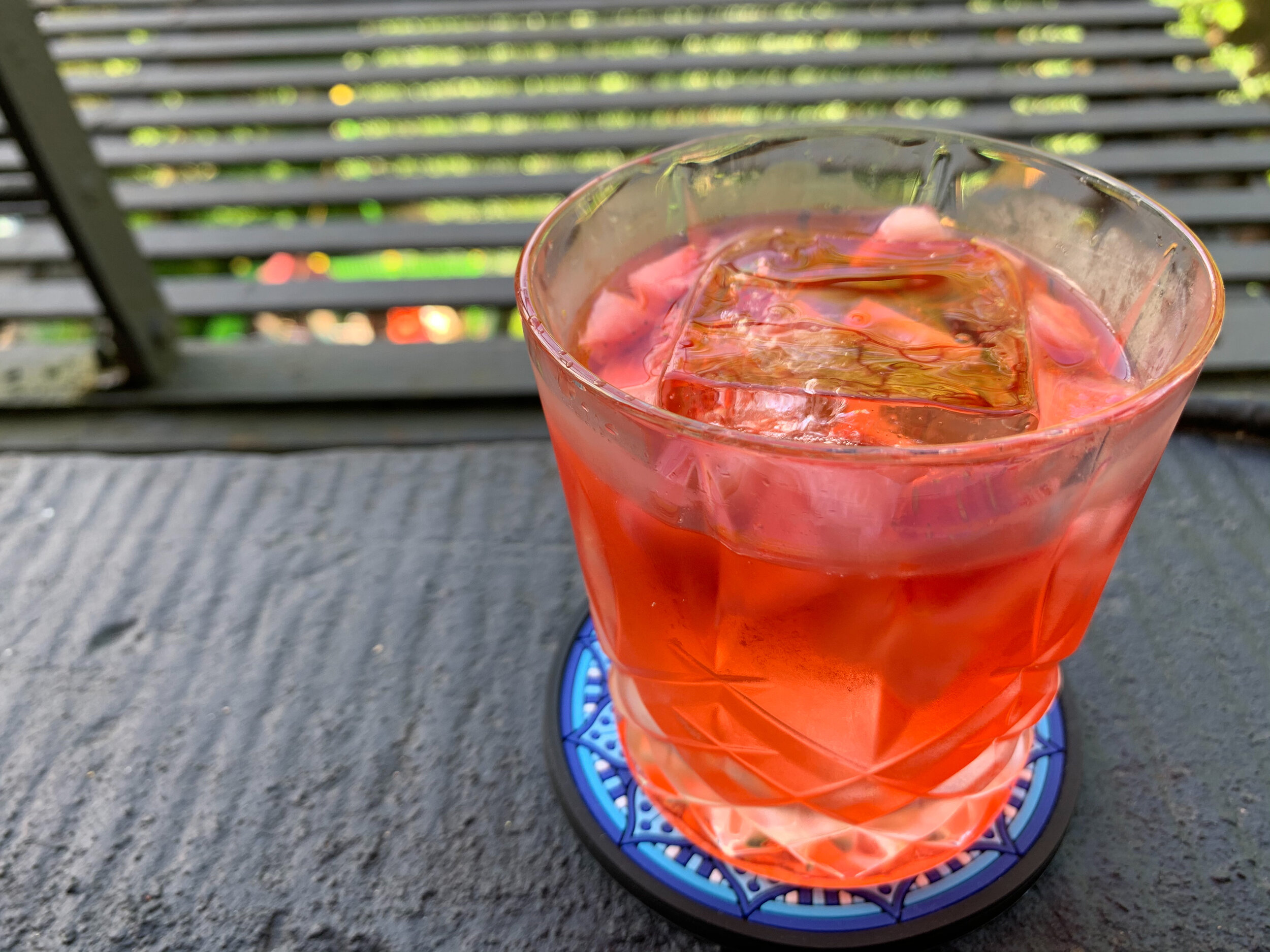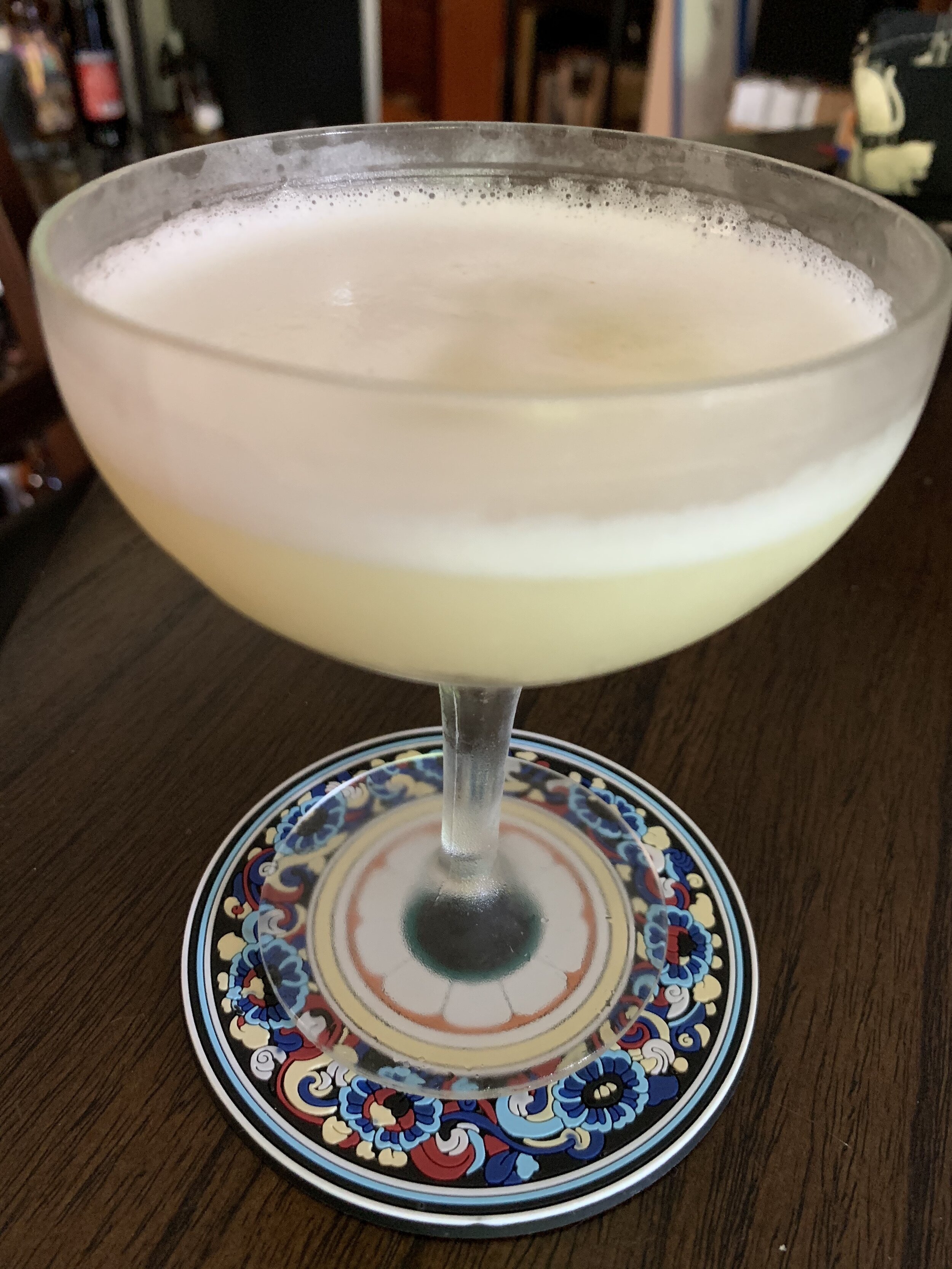Choose Your Own Sipping Adventure With These Three Summery Cocktails
These cocktails are easily adaptable to suit your pantry, and your palate
All photos by Amanda Schuster
I can’t wait to sit on a bar stool again and stare at all the bottles on the shelves. At a bar, I don’t have to think much about what to do with all those lovely elixirs—that job is done for me by those in charge of making my drinks. But like many of you, I’ve had to be my own bartender these past few months, and so it’s been up to me to figure out how to mix and match the ingredients I have at home.
Most cocktails are surprisingly adaptable, it turns out. Below are three that I’ve been sipping at cocktail hour (with an episode of “Cheers”—hurry up, it’s leaving Netflix end of the month!) since it’s warmed up a bit. With all three I started with gin as my canvas, but I soon discovered there were ways to swap it out for other spirits, just as I could experiment with some of the modifiers, without straying too far from the original flavor profile.
Give these recipes a try and discover your favorite combinations!
Strawberry Negroni
stirred, moderately boozy, juicy
I started making this drink at home years ago whenever strawberries showed up at the farmer’s market. This cocktail is summery, scrumptious, incredibly easy to prepare, and so hard to get wrong that the word “foolproof” doesn’t do it justice. Plus the ingredients are conveniently interchangeable.
This season, I tried it with rosé wine for the first time. My friend Jared Brown, drinks historian and Sipsmith Master Distiller, suggested I use it in place of the vermouth when I asked for advice about what to do with leftover wine (hey, it happens). Turns out rosé is a delightful, springy swap for sweet vermouth in Negronis, so I would gladly save some just for this purpose from now on. Even if you don’t have the strawberries, I highly suggest trying the rosé in a standard equal parts Negroni recipe.
For the base, I’ve tried it with dry gin (Sipsmith, Junipero, Plymouth). I’ve tried it with high proof tequila blanco (Fortaleza Still Strength). I’ve tried it with light rum (Plantation 3 Stars). I might have to try it with rye or Japanese whisky or a blended Scotch or Irish whiskey, because I have a feeling that would definitely not suck. It’s all delicious. Just be sure to choose a spirit that wouldn’t overpower the rosé if using. I tried the sweet vermouth variation with mezcal (Convite) and that was a delightful combination as well.
1.25 oz base spirit of choice
1 large strawberry or two small ones, sliced
1 oz rosé wine or sweet vermouth
1 oz Campari or other aperitivo
In a double rocks glass, add the strawberry and base spirit. Stir gently and let sit at room temperature 15 - 20 minutes. Add the other ingredients and ice to top (large cubes preferred). Stir until chilled. Sip. Smile.
Jammy Cocktail
light, refreshing
Modern food writers like to use the word “jammy” a lot, usurping it to describe something that is spreadable or tastes of fruit. I’m not a fan of that context. For instance, the idea of “jammy” eggs is revolting to me. Just call them “soft” OK? What was ever wrong with that?
What I have always been a big fan of is using jam or jelly in a shaken drink to amp up flavor in a cocktail. It’s good for when fresh fruit isn’t in season. It’s good as a pantry sweeper. It’s good as a substitute for liqueurs or syrups. Also, it’s just good! There is a reason Harry Craddock, in 1930, included a Marmalade Cocktail in The Savoy Cocktail Book. In the mid 1990s, another London bartender, Salvatore Calabrese, is credited with creating the Breakfast Martini. It’s another marmalade variation, this time with the addition of triple sec and served with a cheeky toast point garnish (this was at a time when anything served in a v-shaped glass carried an “ini” ultima). This drink inspired countless variations around the world using egg whites, or whole eggs (flips), maple syrup, bacon, etc.
Weekends at home in lockdown, I’ve been into making a sort of hybrid of Craddock’s drink and Calabrese’s. I use lemon juice, whatever flavor jam I’m in the mood for—orange marmalade, currant, strawberry-rhubarb, etc.—an eggwhite, and either a modifying liqueur or a touch of some sort of syrup. The classic base of the drink is London Dry gin, but there’s no reason why you couldn’t swap that out for other ingredients. Tequila and blueberry are a wicked combo. Rum and raspberry. Amaro and blackberry. Whiskey and cherry. See what you have around the house and have fun mixing and matching. You can leave the egg white out, but the drink is much silkier with it in.
2 oz base spirit of choice (if using amaro, use only 1 or 1.25 oz, possibly with a split of another base spirit, but you don’t have to)
.5 oz fresh squeezed lemon juice
Heaping bar spoon fruit preserve of choice
.5 oz fruit liqueur or .25 oz syrup (simple, flavored, honey or maple)
1 egg white
If using the eggwhite, add ingredients to a shaking tin and dry shake (without ice) for about 10 seconds. Otherwise, add ice and shake until cold and frothy, for about 15 seconds. If your jam/jelly has lots of rind or seeds in it, double strain, otherwise, strain into a chilled coupe or Martini glass.
The Little Tramp
refreshing, aromatic, with a little kick
Celebrities. They’re just like us, right? They eat, sleep, and appreciate a good drink and a place to drink them. That’s why there are so many classic drinks named for silver screen stars like Charlie Chaplin, who visited the bar in the Waldorf Astoria so often back in the 1930s that they named a drink on their menu after him.
The original Charlie Chaplin Cocktail recipe called for sloe gin, apricot liqueur and lime juice. Nice, but “it needs a spine,” says former Waldorf bar manager Frank Caiafa, author of the revised Waldorf Astoria Bar Book (where the recipe appears on page 120). The cocktail was popularized again when he put it on the menu with the addition of London dry gin.
I got to thinking about the drink when Luxardo recently released its London Dry gin in the states—tweaked from a family gin recipe that dates back to the early 1900s. I adore the Italian distillery’s apricot liqueur, especially in spring time, and wanted to play with ways to put them together. (Although nothing wrong with simply mixing the two as an apricot Martini. At Clover Club in Brooklyn, they call that a Gin Blossom.)
Turns out Caiafa was onto something back at the Waldorf. Personally, I think it has the “spine” now, but it needs a bitter bite. Also, what if there’s no sloe gin, or apricot for that matter? The sloe can be subbed with cassis or another dark berry liqueur. Caiafa suggests that the apricot can be hacked by making a syrup from dried apricots, puréeing the syrup, then infusing it in an aged rum for about a week, and straining. But who has time for that? Find you an apricot liqueur—it’s worth it, you’ll use it—or heck, this is a boozy drink, use apricot preserves instead, or you could even brew apricot flavored tea and use that. You could swap out the base for light rum or a delicate Irish whiskey, but I prefer it with gin, especially in the warmer months.
My drink variation is named for the famous character created by Chaplin, one who was prone to waddling into strange circumstances and meeting the occasion with satirical, but artfully playful, mischief. For a silent film actor, Chaplin would have had a lot to say about the world we’ve found ourselves in now.
1 oz gin (my recipe was created with Luxardo London Dry)
1 oz sloe gin (sub cassis, berry liqueur, or 1 bar spoon berry preserves)
1 oz apricot liqueur (sub apricot infused rum, bar spoon of apricot preserves, or 1 oz brewed apricot tea)
.5 oz freshly squeezed lime juice
2 dashes Peychaud’s or Angostura bitters
Add all ingredients to a shaker and either shake with ice until cold and frothy if you want it to resemble a Cosmo type drink, or roll it with ice between tumblers for less frothiness (throwing also works, if you have the skill). Strain (double strain if using preserves) into a very cold cocktail glass.



